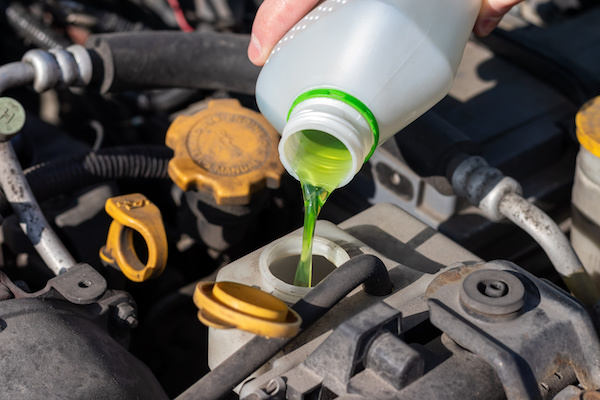It’s a sunny, warm day. You are over-exerting yourself with some yard work and happen to notice that your skin is becoming red and flushed. Have you ever really thought about why this happens? In simple terms, our bodies are equipped with mechanisms to maintain our body temperature at a specific level. Your skin turns red because blood vessels are expanding in order to help cool your body down. As well, you will sweat more to open your pores and cool the surface of your skin with released moisture. Just as the human body has a process to regulate temperature, so do our vehicles. Because an internal combustion engine generates significant heat, the cooling system is a vital function of your vehicle designed to keep engine parts cool and the vehicle running properly. In this article, we review some basics about this particular system, what can go wrong, and finally we share some key maintenance tips to avoid problems.
Cooling System Basics
There are six primary components of your vehicle’s cooling system, as follows:
| Component | Function |
|---|---|
| Antifreeze (aka Coolant) | Coolant is the fluid that is the lifeblood of the cooling system. As coolant flows through your engine, it pulls the heat from the engine parts. |
| Water Pump | The water pump is what conveys the coolant to circulate through your engine. |
| Hoses | The hoses carry your coolant to the various engine parts throughout the vehicle. |
| Radiator | The radiator is what releases the heat from the coolant into the air. The coolant flows to the radiator and with the help of the fan and outside air, the radiator releases that heat off the vehicle. |
| Cooling Fan | The cooling fan blows air through the engine when the coolant begins to heat up. It is responsible for blowing away the heat in the radiator and engine parts and helping to regulate the coolant temperature. |
| Thermostat | The thermostat controls the on/off function of the cooling system to help regulate the overall engine temperature. |
Now that we have explained some of the basic function of the cooling system, let’s go over what can go wrong when your neglect or don’t properly maintain this important engine system.
Common Cooling System Issues
The vehicle cooling system is subject to extreme temperatures while doing its job to keep your engine parts safe from heat. This heat, along with dirt and erosion, can contribute to the eventual breakdown of the system’s components.
| Issue(s) | Symptom(s) |
|---|---|
| Leaks: Leaks can occur in your radiator, the hoses, and even the water pump. | Engine Light displays on dashboard Rapid temperature increase on temperature gauge White smoke or steam coming from under the hood Visible coolant leaks beneath the vehicle Low coolant levels |
| Faulty or Broken Parts: Because the engine is not completely sealed off from the road, it will easily pick up dirt and grime with continued use. Dirt and grime lead to erosion and failure of critical components. | Frequent overheating due to worn or leaky hoses Faulty or broken water pump or thermostat Cracks in the radiator Grimy, dirty coolant Blown gaskets |
Key Maintenance Tips
While the cooling system is subject to wear and tear, there are ways you can maintain the important system to keep it working effectively, these include:
- Maintain Coolant Level: It is important to regularly check your coolant level and replace any lost coolant with the proper 50/50 mixture of water and antifreeze.
- Flush and Replace Coolant: Over time, your coolant will become dirty and should be replaced completely vs. adding clean coolant to dirty. Check with your owner’s manual for specific coolant replacement intervals.
- Keep the Radiator Cap on Tight: The radiator is a pressurized chamber and if the cap is loose or off, this will result in coolant leaks.
- Cooling System Inspection: It is advisable to have your hoses and belts checked for leaks and any signs of aging. Over time and regular use, hoses will become worn and begin to crack, expand, or break. A general rule of thumb is to inspect the system every 12,000 miles or yearly, whichever comes first.
If you take a few proactive steps to keep your coolant system healthy, you can avoid bigger headaches in the long-run. Without the cooling system, your engine will cease to operate and will result in costly repairs or the need for a full replacement. If you have concerns about your vehicle, or would just like a professional inspection, contact Campus Repair today to schedule a cooling system service at our auto repair shop in Ft. Collins, Colorado.

